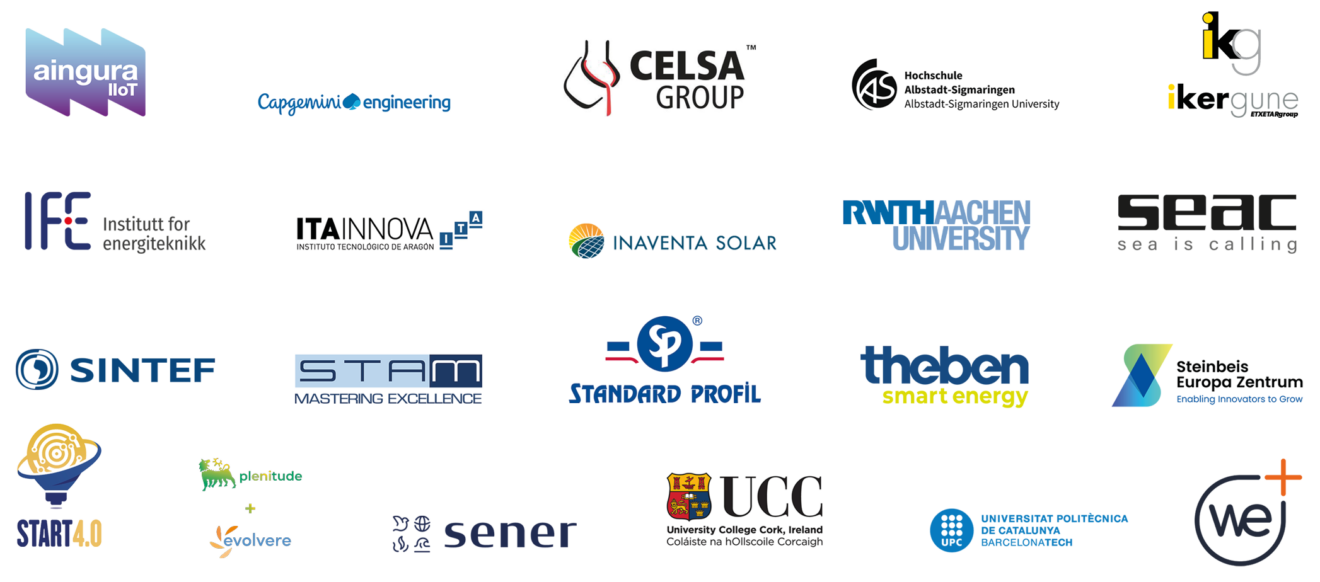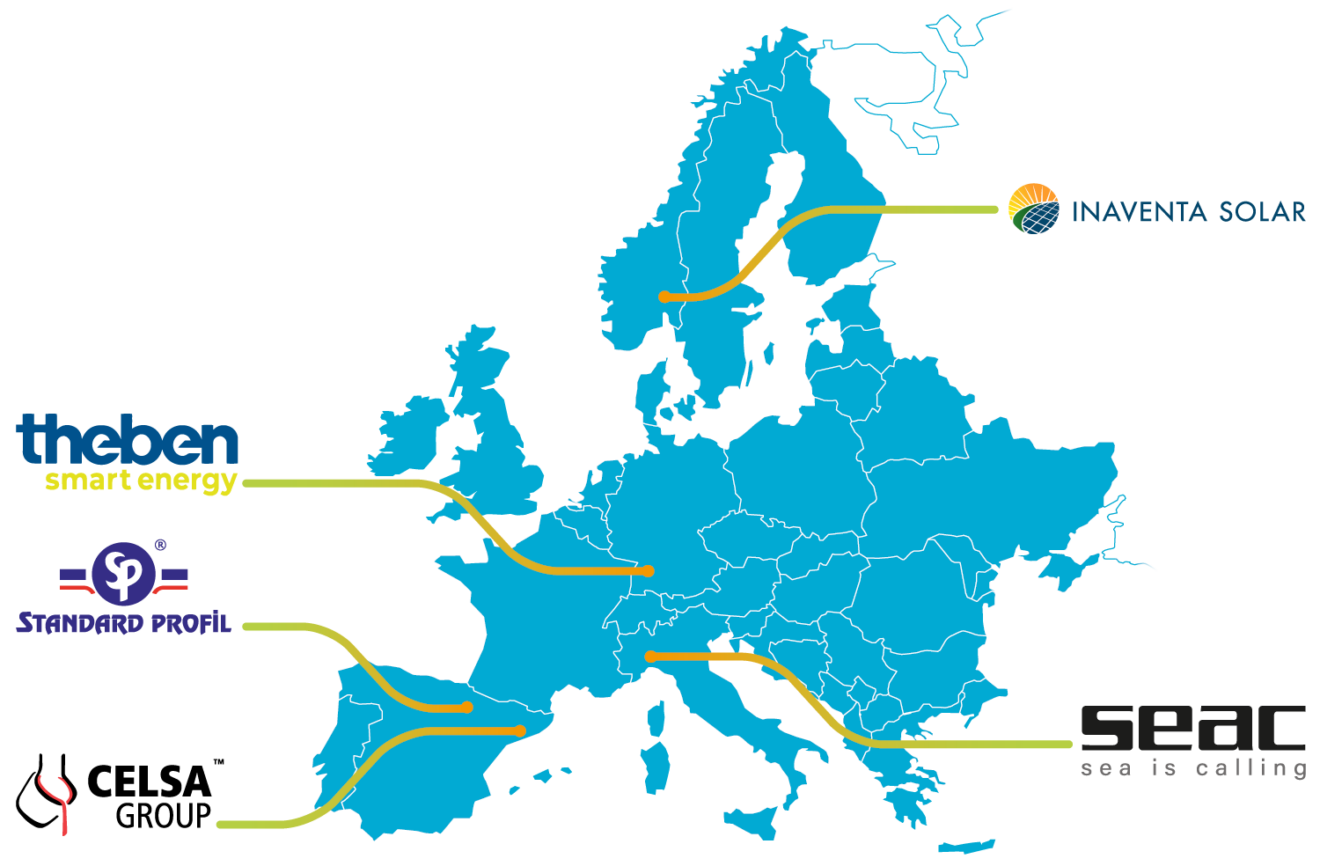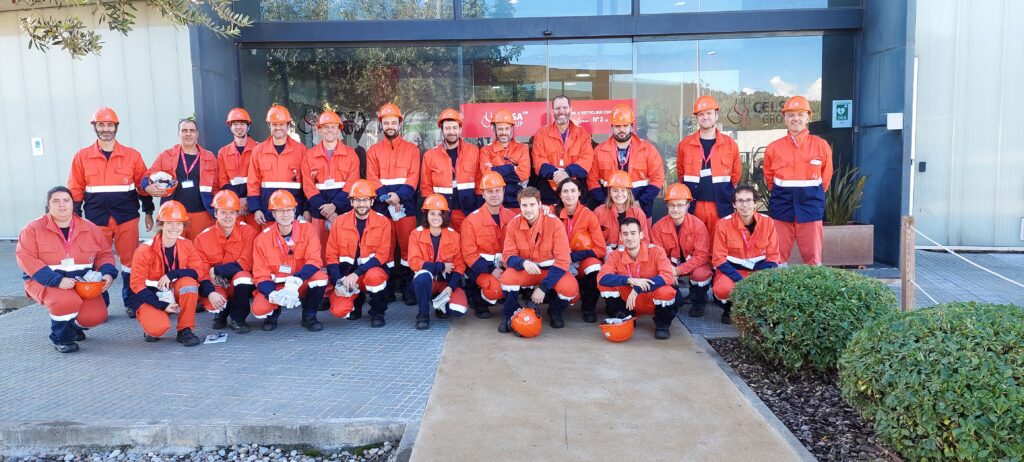|
|

|
Editorial
|
welcome to the very first newsletter of the Horizon Europe funded project FLEX4FACT! We will regularly publish newsletters which will bring you insights into our project activities and current developments. We will also present news about related projects and upcoming events in the field of digital manufacturing and sustainable industries.
|
The FLEX4FACT project was officially launched in June 2022 and is gaining momentum swiftly. In this first newsletter edition, you will find a quick presentation of the project and its main objectives. Furthermore you will have the chance to learn more about the five pilots of the project. You will also find a progress report outlining the status of the technical activities.
|
To stay up to date with the latest developments of the FLEX4FACT project, you can check out our website www.flex4fact.eu or follow us on LinkedIn and Twitter, where you will find additional news and insights about the project.
|
|
We hope you will be enjoying this first issue,
|
|
|
|
|

|
Project presentation
|
FLEX4FACT in a nutshell
The FLEX4FACT project aims to develop an end-to-end ecosystem based on a modular and multi-level architecture to enable flexible manufacturing in industries and create the conditions for the necessary energy transition in energy intensive industrial sectors.
|
|
|
|

|
|
|
|

|
42 months
duration from June 2022
to November 2025
|
|

|
23 partners
from Norway, Spain, Germany,
Italy and Ireland
|
|
|
|

|
€ 18 million
co-funding by the
European Union
|
|

|
5 pilots
to demonstrate the
platform solutions
|
|
|
|
|
|
|
The FLEX4FACT solutions
|
|
Several components will be developed including:
|
|
- A digital tool supporting the definition of pathways for increased renewable penetration in industrial sites,
- Digital twins of 5 different manufacturing processes from real use cases of the industrial partners of FLEX4FACT,
- a digital module for including the energy vector in the planning & control of the manufacturing process,
- a cloud platform allowing industrial sites to participate in the ancillary energy market.
|
|
|
|
|
The FLEX4FACT consortium
|
The FLEX4FACT consortium consists of 23 highly qualified industrial and research institutions from five different countries in the EU. It is composed of technology providers and research institutions in charge of design and development activities as well as key industrial stakeholders which will test and validate the developed solutions in five demonstrators.
|
|

|
|
|
|
|
|

|
The 5 use cases and site visits
|
|
Five industrial use case sites are involved in the project: CELSA and Standard Profil from Spain, Inaventa Solar from Norway, SEAC from Italy, and Theben from Germany. The industrial companies represent a great variety of industrial products and processes: CELSA is involved in a very energy-intensive industry producing steel products, Standard Profil develops and produces automotive sealing systems, Inaventa Solar is a solar collector manufacturer, SEAC produces diving and snorkelling equipment and Theben is a company specialised in electronic switches.
|
|
|
|

|
|
|

|
One of the first tasks of the project was to gain a better understanding of the companies and their production facilities in order to construct the FLEX4FACT reference system architecture. It is key to have a full picture of the existing challenges and solutions to be deployed at each use case site. Therefore, site visits were organised very early in the project in October and November 2022, to allow partners to get to know each other and have a precise view of the facilities that will serve as test beds.
|
|
Each site visit was scheduled for a full day and was divided into several presentation and discussion sessions. The project partners used the time to map the production processes and identify the manufacturing flexibilities of the industrial sites. Furthermore the modules and system boundaries were defined and challenges and goals for the industrial use cases within the project were discussed. If you wish to get an insight into a site visit, you can have a look at the short video produced during the Inaventa Solar visit (Weblink).
|
|

|
|
Project partners of FLEX4ACT participating in the site visit of CELSA in Barcelona (Spain).
|
|

|
|
|
FLEX4FACT's workplan
|
|
The FLEX4FACT project consist of six technical work packages, dedicated to the development of an end-to-end ecosystem based on a modular and multi-level architecture to enable flexible manufacturing in industries. The following graphic illustrates the interactions between the individual WPs to facilitate the FLEX4FACT project.
|
|
|
|

|
|
|

|
Progress and outlook report
|
Data collection strategy developed and first technical studies launched
|
In the first six months of the project the main focus was to have a clear view of all five use-case sites. WP1 focused on the collection of data for each industrial use case including information on production processes, manufactured products, data flows, energy consumption, emitted emissions. Project partners were invited to participate in site visits and could discuss open questions with the plant managers and operators of the FLEX4FACT pilots. This valuable information allows to better compare the different sites and will support the development of a reference system architecture.
|
In WP2 Sankey process flow diagrams of the 5 pilot sites were developed to facilitate the assessment of potential energy flexibility. In WP3, an initial plan for the development of the digital twins for each use case was elaborated, taking into account inputs from WP1 and internal technical meetings. In cooperation with WP6 a preliminary data collection strategy was defined, based on existing available data and the specific challenge of each pilot site. Within the next months this strategy will be refined and finalized, which will lay the foundation for development and validation of WP3 and WP4 models. The first WP4 activities aimed at mapping the decision-making processes for production planning and control for each use case. Data required to run the planning optimisation algorithms will be defined in the next months. Furthermore, the software architecture of the decision and support system will be designed.
|
The work in WP5 was mainly dedicated to reviewing literature on aggregation, markets, and industrial flexibilities as well as studying German, Norwegian, Italian and Spanish regulatory frameworks for electricity markets. This has helped to define the concept of flexibility in the contect of FLEX4FACT, leading to first mathematical and optimization models. Once the models are validated, algorithms will be developed and later integrated into the flexibility platform. In WP6, validation protocols for the FLEX4FACT solutions will be defined in the next months. This work will consider how the solutions will be integrated into practice, what Key Performance Indicators (KPIs) might be used, and how validation is planned for the use cases in WP6.
|
First communication materials available and project webpage released
|
|
In addition to the work carried out in technical work packages, a communication, dissemination, and exploitation plan (D7.1) was developed within WP7. Additionally, the project’s corporate identity (CI) was designed comprising the project logo, a colour palette, fonts, key visuals, Power Point and word templates. A first press release informing about the project start and the kick-off meeting was disseminated. Two social media channels (LinkedIn and Twitter) have been created to raise awareness of the project amongst targeted audiences and a project website was launched end of February 2023.
|
|

|
|
|
Interesting conferences and events
|
|
|
|
|
|
|
|
|
This project has received funding from the European Union’s Horizon Europe research and innovation programme under grant agreement No 101058657.
|
|
|
|
|
|
|